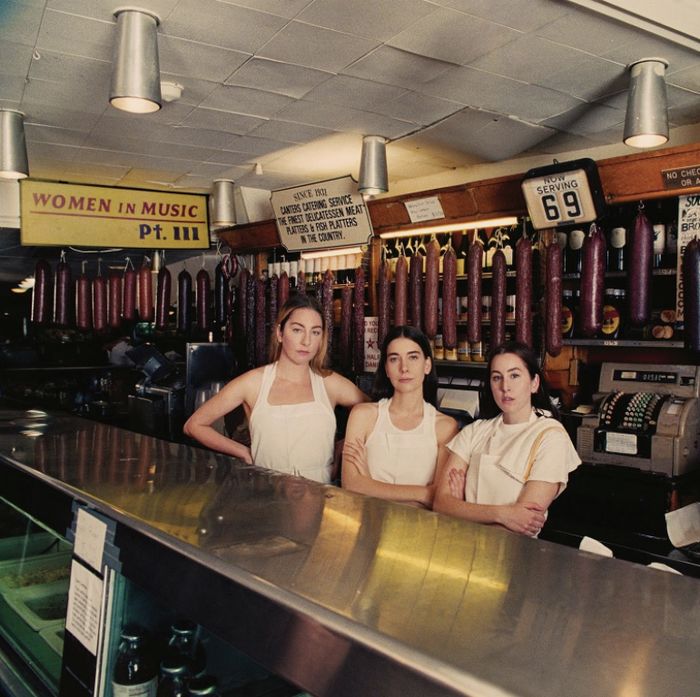Suzanne Vega and her Female Heroines
Maria Telnikoff explains why the American singer-songwriter of the 1980s deserves to be heard today

I first encountered Suzanne Vega when my mum played Tom’s Diner to me about ten years ago, thinking it a fun song to accompany my tap dancing. Very soon, I knew it off by heart. As an acapella piece, it was one I could sing solo and convince myself that it was a perfect imitation (ah sweet, misguided me!). The song is a beautifully simple ode to the feeling of being alone in the company of others; Vega watches the man at the counter and a female customer greet each other, but does not want to look; she reads the paper, but does not recognise the names it lists. In my opinion, the significance (and fleetingness) of casual interactions has never been so well expressed.
While the catchy tune of Tom’s Diner never strayed far from my lips, I did not think deeply about Suzanne Vega until recently. Like every young person who thinks they were 'born in the wrong era', I have a record player and, on a quest to expand my vinyl collection, I discovered a new record shop in my hometown (the owner informed me it’s actually been around for three years). I was elated to see Suzanne Vega written in large red letters on the first vinyl in the stack. Vega’s eponymous first album (released in 1985) on a well-thumbed vinyl makes you wonder about the former owner’s story and imagine the night on which the dust jacket acquired its cigarette burn.
Already in her first album, Vega established a unique female voice which combines rich storytelling with intimate, poetic lyrics. Following the bardic tradition of solo performers like Cohen and Dylan, Vega’s words are marked by a clarity that conveys deep feeling, offset by her ever-smooth, almost casual singing voice. Small Blue Thing has some of the most beautiful language, as Vega imagines herself in all the kaleidoscopic capacities of a humble marble from a static piece of glass, observant but fragile, to something that rolls in the “you’s” pocket, limitless and light. The line “I am cool and smooth and curious, I never blink” always affects me with its melancholic simplicity.
“Vega combines rich storytelling with intimate, poetic lyrics.”
Marlene on the Wall is its opposite in tone: an upbeat, driving guitar strums to the tune of a troubled relationship, trivialised by Vega’s beautifully impassive delivery. What makes this uniquely her, however, is this Marlene who is always sitting on the wall, observing them with a mocking smile that “says it all”. For a song about Vega’s “I” and “you”, it becomes more about the two women, Vega versus Marlene, the “fighter” and the onlooker. Vega overcomes this ambiguous, almost threatening Marlene-gaze with the mantra of the song: “I think it’s called my destiny that I am changing, changing”.
I love how seamlessly Vega turns a song about two people who “don’t talk about it later” into a call to arms to accept change and see loss (of a love, a life) as something triumphant and as much a part of one’s “destiny” as its accrual. But then again, it is simply impossible to summarise Vega’s work with such sweeping statements.
Vega’s most famous, internationally acclaimed song is Luka, released in her second album, Solitude Standing, in 1987. The holy trinity of drums, guitar and synth piano establish an optimistic pop context for a song about child abuse. With her signature heart-wrenching casualness, Vega imagines herself as the young boy, Luka, who lives in the same apartment block as Vega and whose repeating lines “just don’t ask me what it was” and “just don’t argue anymore” express the tragedy of the young victim’s situation.
In the very same album, Vega imagines herself as the mythological figure Calypso, the nymph who, in Homer’s Odyssey, keeps the voyaging hero on her island of Ogygia for seven years. The song imagines her response to having to finally let him go, something that the epic narrative, in traditional misogynistic fashion, fails to consider.
The Neo-Classical theme continues with Wooden Horse, in which the story of Troy’s fall is abstracted into a dark, philosophising work about life and remembrance after death. Vega’s power as a singer-songwriter lies in this literary creativity and, crucially, her ability to turn any story or idea into something deeply personal, intimate and universal. Vega travels across time and space, her themes ranging from Ancient Greece to local diners. She always works her unique perspective and personality into the subject matter with lightning deftness.
“Vega travels across time and space”
The eponymous song of this momentous album, Solitude Standing, is pure Vega as she paints for the listener the personification of Solitude: a woman, marked by her dark black silhouette, long cool stare and silence. The interaction between Vega’s “I” and solitude incarnate is chillingly beautiful, as Vega encounters her in doorways, terrified by her “imprint of fear” but simultaneously magnetised by her seductive darkness. Solitude is mysterious and yet familiar, as Vega says, “I seem to remember each time we’ve met”; this is Bowie’s The Man Who Sold The World, but written by a woman.
Vega’s sense of being an outsider, semi-humorously depicted in Tom’s Diner, is intensified here. You can feel this distinct Vega-ness running through the rest of her albums: a cool distance she creates between herself and the world she describes. Like Calypso watching Odysseus leave from her island, she encircles herself in a cool sea of separation from her deeply emotional songs, letting them glide by with ironic, sometimes biting, indifference. Take (I’ll never be your) Maggie May from her 2001 album Songs in Red and Gray or Caramel in her 1996 album Nine Objects of Desire, for instance.
Vega is a special artist - her music has persisted in quality and character for the last 30 years, displaying limitless imagination and unfailing Vega-ness. She perpetually explores femininity, in all its discordant and difficult facets. In her 2007 album, Beauty and Crime, she adopts the male, sexualising gaze with New York is a Woman, as she sings “you were so impressed with a city so undressed”.
Yet New York, turned female by Vega, rises as a triumphant city of power and seduction, capturing men’s hearts but to whom “you’re just another guy”. So much glamour, devastation and strength fills Vega’s creative female vision, defining the world truly and completely by women.
Whether it’s the mocking gaze of Marlene calling Vega to fight not falter, the fearsome yet seductive touch of the ever-present lady-Solitude, or simply the girl in Tom’s Diner who momentarily suspends life, Vega’s women are testaments to the creative genius of this female artist, who not only explores femininity but revels in it.
 News / Clare Hall spent over £500k opposing busway 24 December 2025
News / Clare Hall spent over £500k opposing busway 24 December 2025 Comment / The ‘class’ of Cambridge24 December 2025
Comment / The ‘class’ of Cambridge24 December 2025 News / Caius mourns its tree-mendous loss23 December 2025
News / Caius mourns its tree-mendous loss23 December 2025 Comment / League tables do more harm than good26 December 2025
Comment / League tables do more harm than good26 December 2025 News / Eight Cambridge researchers awarded €17m in ERC research grants27 December 2025
News / Eight Cambridge researchers awarded €17m in ERC research grants27 December 2025









